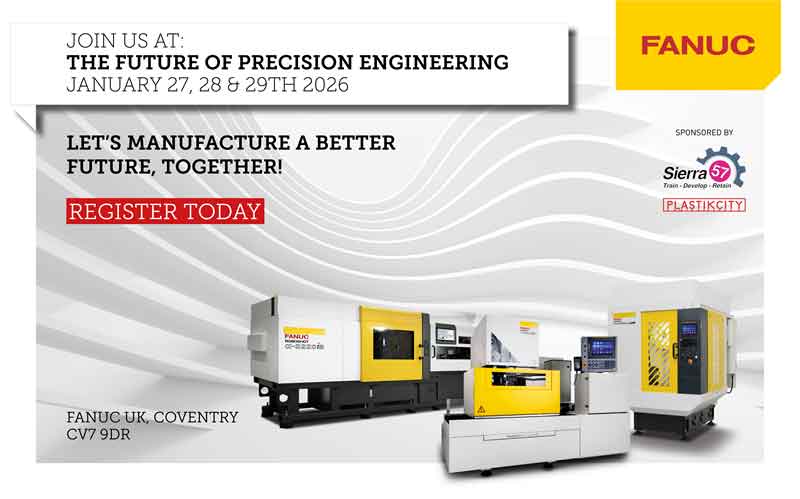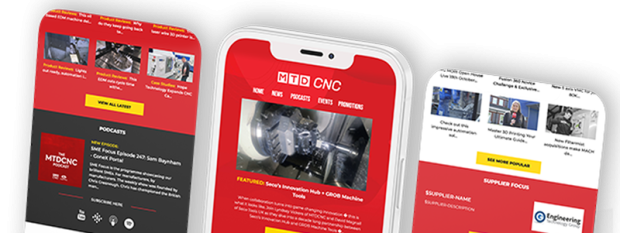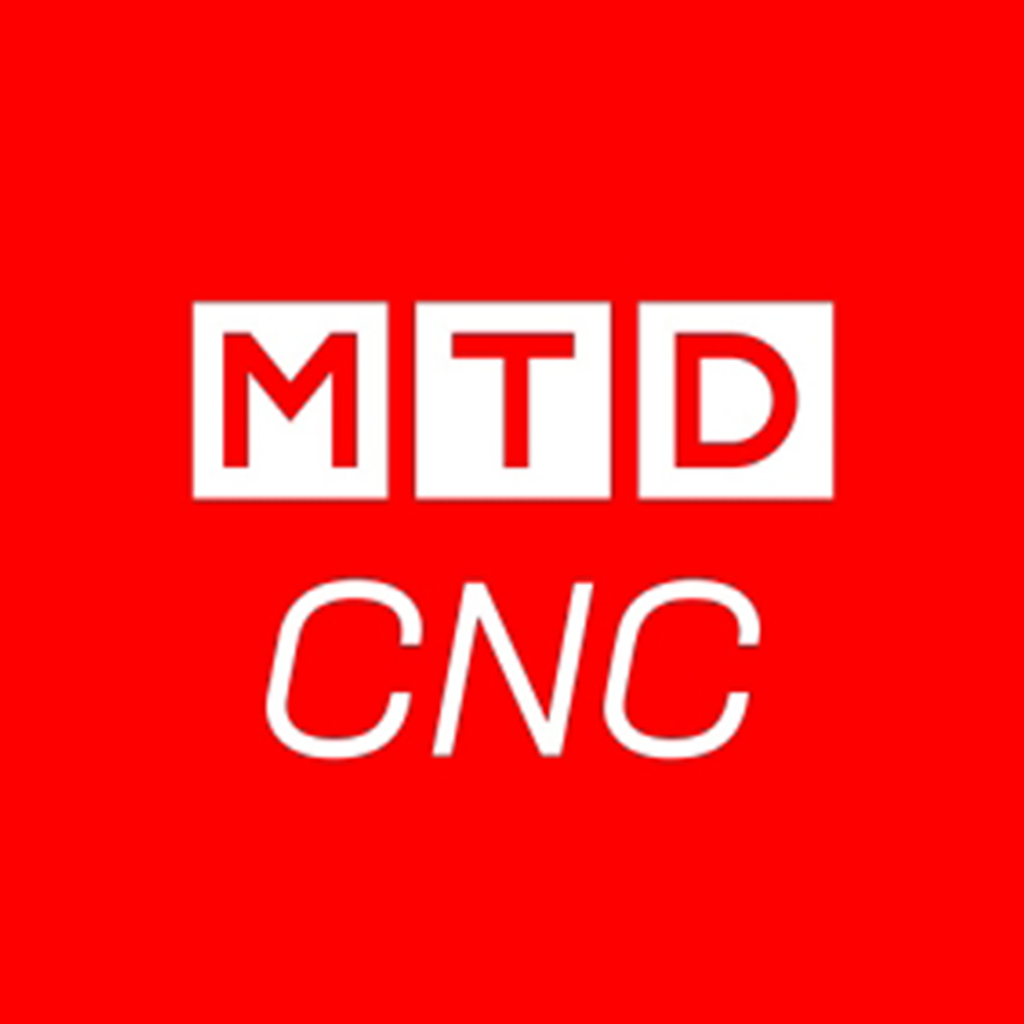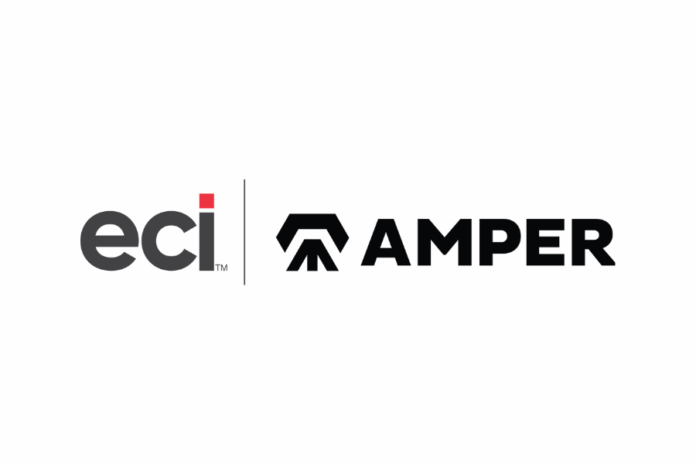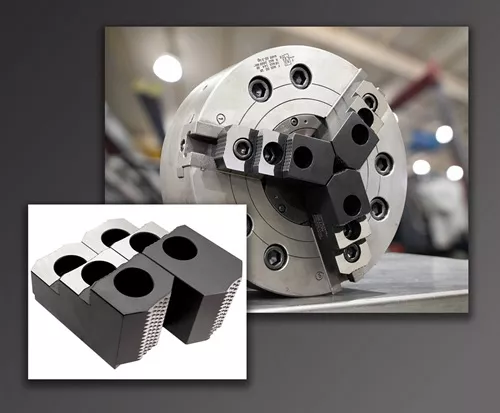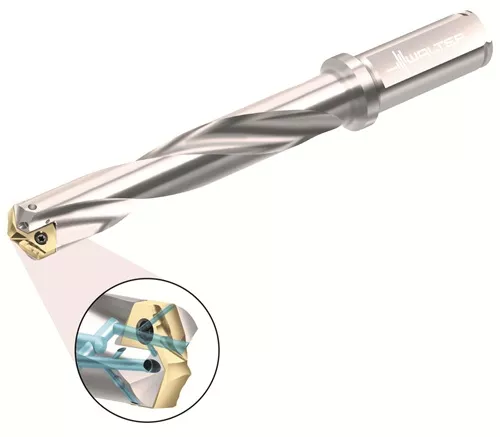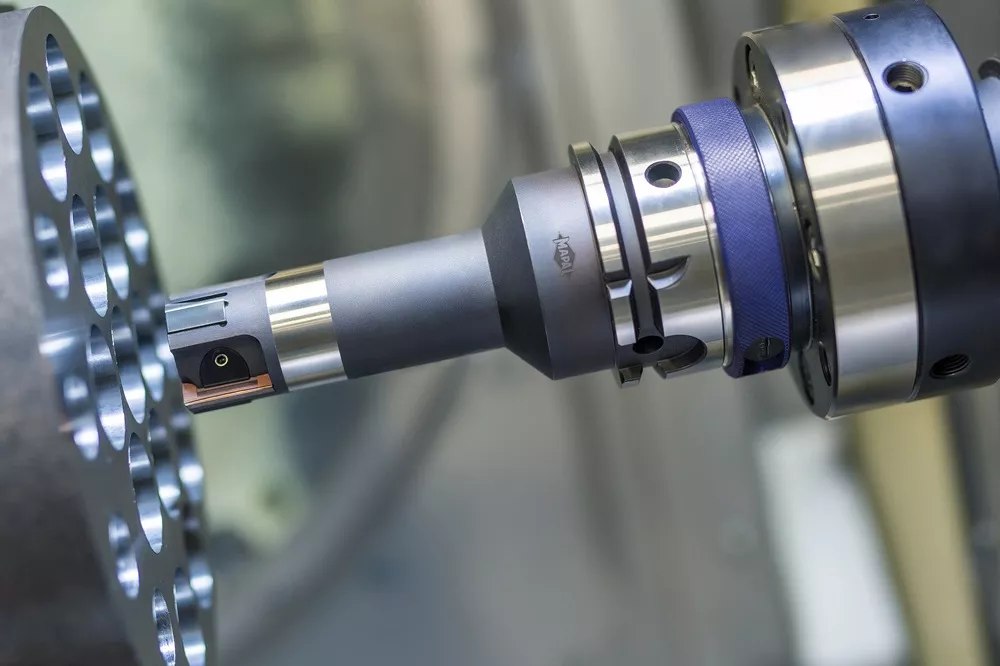
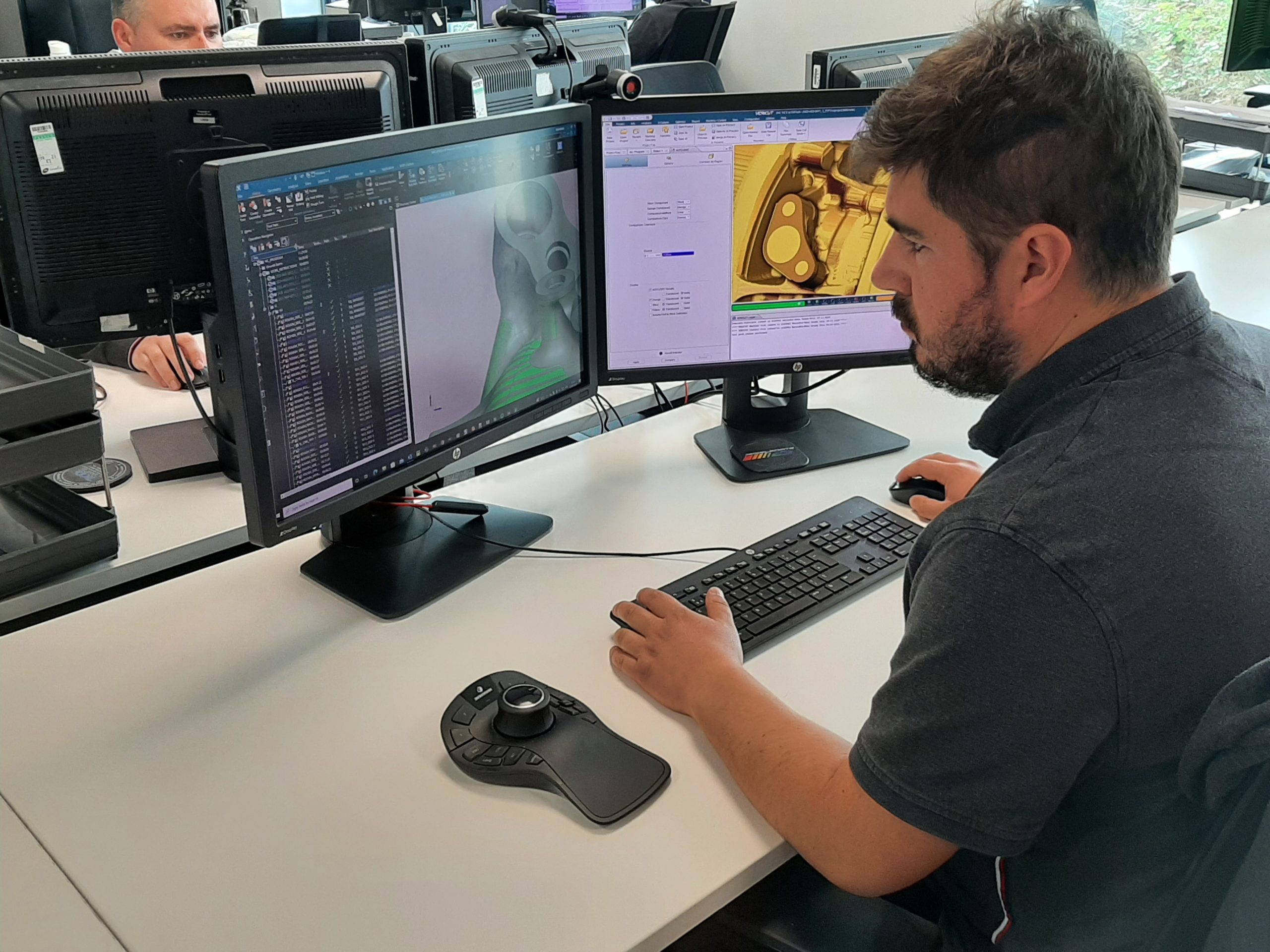
The Mercedes-AMG PETRONAS Formula One Team relies on VERICUT verification, simulation and optimisation software from CGTech to guarantee the successful machining of its high-complexity, high-value components. A VERICUT user for over two decades, the team has engrained VERICUT into its Standard Operating Procedures (SOPs), aware of the benefits it provides in reducing machine collisions and component scrap.
Today, the Machine Shop at the Team headquarters in Brackley, not only manufactures parts for the race cars, but also for several customer programmes, including other Formula One Teams and the INEOS Britannia Americas Cup Sailing Team.
“We are pretty diverse with our component supply, but in all cases reaction time is key. For our race car, we sometimes only have 24 hours from design release to delivery,” reveals Machine Shop Manager Robert Brown. “VERICUT gives us the confidence to start the machine running safely, enabling us to switch our focus onto another activity, such as writing programs or setting up tools for the next part. This is far preferable to requiring the presence of an operator at the machine to mitigate the risk of a collision.”

Formula One Teams have been operating within an FIA cost cap, so the Mercedes-AMG PETRONAS Formula One Team cannot afford to be non-productive.
“Today, championships could be won or lost in the factory,” states Mr Brown. “Obviously without the right drivers we’re not going to win, but there’s a reason the sport currently has three dominant teams. Those teams can develop and engineer cars on a scale that no one else can match.”
According to Production Engineer James Peddle: “Some thought the cost cap would change the order of the grid, but the well-resourced teams with good structures and processes in place have continued to do well. At Mercedes, we’ve got leaner and doubled down on how much value we can extract from our time. As an organisation we are more efficient now than we were two years ago, before the introduction of the cost cap.”
Advanced machine tools
The Mercedes-AMG PETRONAS Formula One Team has 25 machine tools on-site at Brackley, including 5-axis machining centres, turn-mill and multi-axis CNC lathes.
“The enemy of Formula One cars is weight, so approximately 60% of our parts are made from various types of aluminium alloy,” says Mr Brown. “A further 30% are made from titanium, with the remaining 10% comprising steels, other alloys and plastics. Batch sizes of 8-12 are typical for our 5-axis machines. This is our speciality and the team gets its value from this department. We can get high-complexity parts up and running quickly, working closely with the design team to manage any iterations.”
One of the principal challenges is minimising cycle times for these highly complex components without compromising quality. A recent case in point was a titanium front axle.
“The cycle time was in the region of 70 hours over five operations,” says Mr Peddle. “Due to the nature of the material, we were limited by the speed of machining. However, by using the latest machining methodology from one of our suppliers, we managed to reduce the lead time by 50%.”
“We always get a really good solid-model transfer from tooling suppliers into VERICUT for our simulations. Whenever we need a bespoke cutting tool, we can do the modifications virtually and seamlessly, and complete the simulation before we place our order for the tool.”
Added value
There is little doubting the value that VERICUT adds to operations at the Machine Shop of the Mercedes-AMG PETRONAS Formula One team. Mr Brown was with the company when the software first arrived over 20 years ago.
“Previously we would export CNC code from our CAM system, alongside creating some CNC code conversationally and editing this together into a single CNC program. We had too many collisions on the machines and too much scrap as a result of human error. But once we had VERICUT, we could export all of our CNC code from CAM and validate it (using VERICUT). The initial investment was all about reducing risk and over the years that thought process has continued. We know that better use of CAM and more use of VERICUT simulation will reduce errors and the risk of machine collisions. If code goes through VERICUT, we know it’s safe.”
Today, tool transfer from the CAM session, through VERICUT and onto a tool sheet is virtually seamless at the F1 Team. The opportunity for human error, perhaps adding incorrect details or picking the wrong geometry, is significantly reduced.
“It’s always been about reducing scrap and protecting machine tools, which are very expensive assets,” says Mr Brown. “A new spindle is around £20,000 these days. We’ve damaged spindles in years gone by, and when we scrutinised the root cause, it was predominantly human error. Utilising VERICUT to simulate the CAM session has removed the human error. Today, every CNC machined component is validated via VERICUT.”

The process
When the design department at the Mercedes-AMG PETRONAS Formula One Team releases a CAD model, the Engineering team imports it into a CAM session where various templates exist for the different machine tool types.
“We program within the context of the machine regarding travel limits, access and other parameters,” says Mr Peddle. “Once we’re happy with the program we post-process it and use our CAM-to-VERICUT interface to replicate the set-up we created in the CAM software before running the simulation. We also use VERICUT’s AUTO-DIFF module to check for any excess material or gouging. This is important as we don’t want to reach the end of the program and identify that we’ve missed a section of machining or gouged the part. It would be difficult and increase the risk to manufacture some of our parts without AUTO-DIFF, by solely relying on the CAM package.”
He continues: “Another advantage is simulation speed, which in our experience is far greater than the core CAM product. This ensures a much more efficient and flexible work stream, where we can be programming certain component features while simulating others.”
Around 30 employees at the Mercedes-AMG PETRONAS Formula One Team are trained to use VERICUT, at various levels. Production Engineers might need to create, edit or interrogate sessions, whereas machine operators might only replay the simulation to identify what type of machining operation is coming next in the sequence.
Regular investment
“CGTech has a good library of machine tool templates, so they can usually provide a template ‘off-the-shelf’ or create a bespoke version if required, based upon their extensive library,” explains Mr Peddle. “The support is always excellent, quickly resolving any issues we might have.”
Adds Mr Brown: “CGTech regularly spends time on site with us, periodically through the year, integrating with our CAM team. They understand what we do here and what we need from VERICUT. We have a very strong relationship with them.”

“We’ve recently done a lot of work reducing our 5-axis milling cycle times,” says Mr Peddle. “CGTech has a really good relationship with our machine tool suppliers, which meant they were able to gain access to certain machine parameters and build that information into our VERICUT projects, helping us to simulate the digital cycle time compared with the actual cycle time.”
Another benefit of VERICUT is its independence from the CAM session. The programming stations in the office and on the shop floor at Mercedes-AMG PETRONAS Formula One Team have multiple screens, so users can work on CAM and VERICUT sessions in parallel.
“Due to our compressed manufacturing lead times, we’ll routinely start machining a part before the program is complete, so we can be simulating while we are creating the next sequence of CNC code in the CAM session. We always have a finite amount of time, so we’ll begin roughing as soon as a part is released and get as far as possible before waiting for more code. It’s the only way we can achieve on-time delivery, which translates directly into the machine shop adding performance to the race car.”
Concludes Mr Brown: “Tools such as our CAM system and VERICUT verification, simulation and optimisation software ensure we get the best result possible in the finite amount of time we have.”

